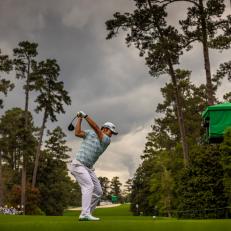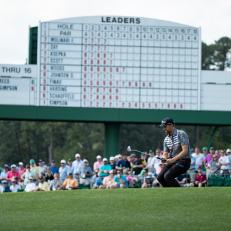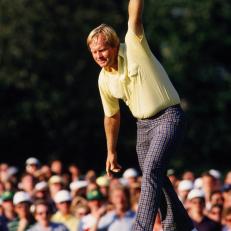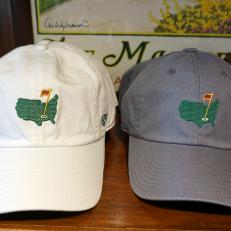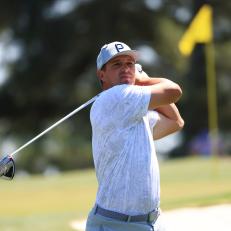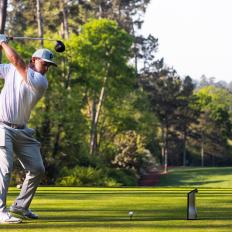Masters 2021: Augusta National's 10 scariest shots
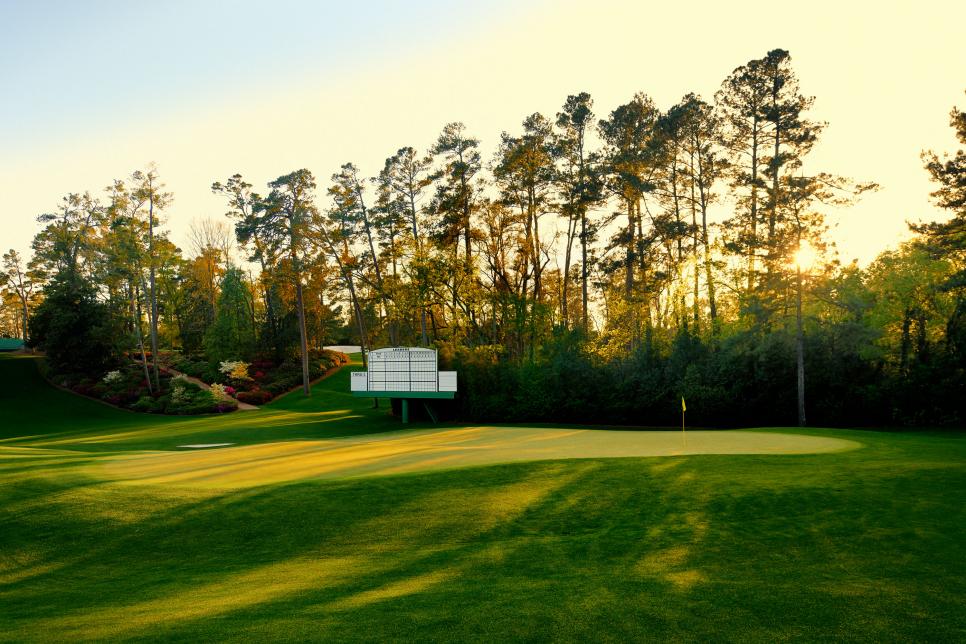
Photo By: Dom Furore
Photo By: Ben Walton
Photo By: Jamie Squire
Photo By: Patrick Smith
Photo By: Jamie Squire
Photo By: Getty Images
Photo By: Getty Images
Photo By: Andrew Redington
Photo By: Getty Images
Photo By: Kevin C. Cox
Photo By: Ben Walton
Gary Player once said of Augusta National that “every shot is within a fraction of disaster.” That might be a bit of an overstatement, but it underlies the fact there are a number of shots on the famed course where players are keenly aware of the potential penalties for a misstep. As such, these shots test the nerve as much as the talent level. In speaking with more than 15 past champions for the hole-by-hole course tour section of the Masters Journal over the years (with player quotes from those conversations), themes emerge as to the shots that elevate the heart rate—and possibly scores. Here are 10 shots that Masters participants, and us as spectators, should pay extra close attention to during the 2021 Masters.
Photo By: Dom Furore
Opening tee shot on No. 1
From the start, Augusta National presents a stern test. In most years, this is a shot players have spent seven or eight months thinking about. Or in the case of a Masters rookie, their entire life. “No one is exempt from that,” said Trevor Immelman, the 2008 Masters champion. Add in the accuracy demanded by the fairway bunker on the right and trees on the left and it’s understandable the knees might get a little wobbly on Thursday.
Photo By: Ben Walton
Pitch from just short of No. 3
The shortest par 4 on the course at 350 yards also presents an approach shot Masters participants fear. In recent years the strategy has shifted from laying up by the fairway bunkers to blasting driver as far as possible. Doing so leaves a pitch of only some 50 yards. That normally would be an almost guaranteed birdie. Here, however, it demands a precise shot to the elevated green. “If you hit it just a tiny bit short, you’re going to see the ball come back pretty much to the spot you hit from,” said Sergio Garcia, the 2017 champion. “If you hit it too hard, the ball may go over the green and that sets up a delicate pitch shot.”
Photo By: Jamie Squire
Chip to back-right pin on No. 6
The sixth hole is hardly the most daunting on the course. There’s no water and it’s a downhill par 3. Still, in three of the last six Masters it’s produced an “other.” How is that possible? Well, it’s because it possesses one of the more interesting greens on the course, with a high rise to the back-right portion of the hole. For those coming up short of the green when the pin is in that position, they should be mindful of what happened to Jose Maria Olazabal there during the second round in 1991. The Spaniard hit two chips from in front of the green only to see them climb the slope and come back to his feet. Determined not to do it again, he hit his third chip over the back leading to a quadruple-bogey 7—costly considering that come Sunday he finished one back of winner Ian Woosnam.
Photo By: Patrick Smith
Approach to front pin on No. 9
We’ve all seen it. An approach shot to a front pin placement on the par-4 ninth either coming up short or spinning back off the green and tumbling some 30 yards back down the fairway (see Norman, Greg, final round in 1996, among others). “Like everyone else I’ve experienced the shot that comes up short and rolls down the hill,” said five-time champion Tiger Woods. “That happened on Sunday in 2001, but I was lucky I was able to see the bottom of the flag and hit a low, spinning pitch and save par. Coming up short is what happens when you get a little too cute, because you don’t want to be putting to the front hole location from the middle shelf.” In other words, don’t come up short but don’t be long, either.
Photo By: Jamie Squire
Approach shot on No. 11
Historically, this is Augusta National’s most difficult hole. How scary is the approach shot? Ben Hogan, one of the greatest ball-strikers in history, once said, “If you see my ball on that green in two, you’ll know I missed my second shot.” When an all-time great is bailing out, imagine how much pucker there is for a typical tour pro. The safer play on this long, downhill approach with water left is to come up short and right—and that’s not always a bad thing. Just ask Larry Mize.
Photo By: Getty Images
Tee Shot on No. 12
Lloyd Mangrum once dubbed it “The meanest little hole in the world.” Gary Player referred to is as “The hole of vultures,” speaking about the patrons in the grandstands waiting for a ball to find the water. Ben Crenshaw believes the hole was built on an Indian burial ground, hence the baffling winds. Whatever the reason, the shortest hole on the course usually forces the longest deliberations on the tee as players factor in the winds of Amen Corner and a green that is only nine paces deep in spots.
Photo By: Getty Images
Approach to back-left pin on No. 14
The 14th is the only hole at Augusta National without a bunker. It doesn’t need one. Although there are some pin positions that are accessible, there are others such as the back-left position where the margin for error is slight. Miss this one left of the green and it’s almost a certain bogey, but a bail out is no bargain, either. “There have been a couple of years where I’ve chickened out going for the left pin and I’ve missed the ridge on the top part by about a yard or two,” said Woods. “The next thing I know I have a 60-, 70-footer up the hill. That’s what 14 can present.”
Photo By: Andrew Redington
Short approach shot on No. 15
Hit a perfect drive and this becomes an easy birdie hole, but anything else and you could be left hoping just to walk away with a par. A layup will leave you just a short wedge in, but that shot is one players dread: a precise shot off extremely tight turf to a tricky green, which is an especially small target if the hole is cut on the left. Add to the fact that you’re hitting your approach off a downhill lie over water with a tightly-shaved bank and the potential for spinning one off the green is very real and you can make a big number quick.
Photo By: Getty Images
Putt from top right on No. 16
Come on, a putt striking fear into the hearts of the game’s best? You bet. At least this one. Thou shall not leave the tee shot on the back-right shelf when the pin is left is drilled into Masters competitors from the first time they see the hole. Still, players are trying to use the slope on the tee shot to get the ball close for birdie. As such, sometimes they leave one out to the right. Good luck with that. Just watch the video of Woods in the final round of 2002. His back is literally to the hole and he’s playing 15 to 20 feet of break down the hill. Players will happily take any putt that stops within six, seven feet of the hole from there and breathe a sigh of relief.
Photo By: Kevin C. Cox
Tee shot on No. 18
It’s as claustrophobic a shot as there is at Augusta, where a slight pull can easily catch branches and drop a ball a mere 100 yards or so off the tee. “I think the tee shot on No. 18 is the most difficult on the course,” Immelman said. “And if there’s a crosswind, you have a tough job trying to figure out how you’re going to keep the ball from veering into the trees. … That’s one reason I exhaled deeply after my tee shot [in 2008].” That’s a feeling a lot of other players likely have had as well.
Photo By: Ben Walton

